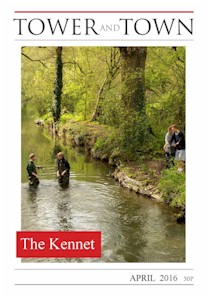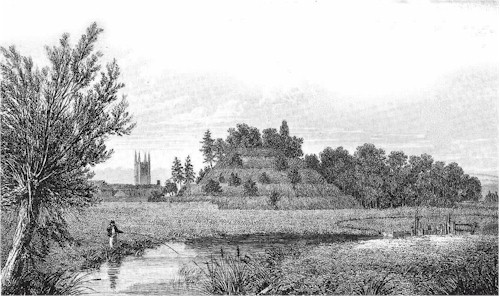

Tower and Town, April 2016 (view the full edition) (view the full edition)Fishing The KennetJoss Fellowes recounts his own Experiences of Fishing on the Kennet and other South of England Rivers. I love fishing for many reasons; it is an escape from the business of life. I love the feeling of the fish biting, skilfully reeling the fish in. But what I love most about fishing is eating a freshly caught trout after a long day's fishing. I am lucky enough to go to Marlborough College where the River Kennet is right on our doorstep. I also live around the River Wylye so I am a keen fisherman myself. I have had some outstanding days' fishing on the River Kennet; I even caught my best fish on the Kennet, a 3.5lb wild brown trout. But it took me a while to get grips with fishing, so I want to share with you some advice on how to avoid my mistakes. I am going to start with the rod. If you are an inexperienced fisherman you could make the mistake of thinking all rods are the same. There are essentially two types of rods, fly rods and spinning rods. There are many divisions within that but for the Kennet a fly rod is best. When I bought my first rod I bought a lake rod, it was a fly rod but far too heavy for rivers like the Kennet. I went on for about a year with this rod and didn't catch a single fish. I then bought the proper rod (a five weight) and then I started to catch some fish. The five weight is good because it doesn't spook the fish by making too much of a splash. The type of rod is very important. There are two types of flies, dry flies which float and wet flies which sink. Knots on your flies are essential. To make sure that you don't lose your flies you need to give your knot a test by tugging on it. Once when I was fishing on the Kennet my fly came off whilst I was casting. I then continued for about ten minutes without a fly on! I have also lost countless fish on poorly tied knots. Also you have to remember to use floatant on dry flies unless you want them to turn into wet flies! When you are using wet flies, strike indicators are good ways of knowing when you have a bite and when to strike. It is common to take your favourite fly and tie it on without any real thought. I used to do this and unsurprisingly wasn't catching many fish. I was taught to use my net to physically catch a fly in the net. This way you can see what the fly life is like on the water. When you are choosing your flies another really easy way to decide what fly to tie on is look around. Some flies stay close to bushes so the fish there will eat that sort of fly most. For example there are a lot of hawthorn bushes. A good, easy technique for spotting flies is to find a spider's web and see what it has caught. This means that hawthorn flies work really well around this area. Another reason to look around you is in case there is a tree behind you. I have lost countless numbers of flies to trees! When you are fishing in a catch and release area make sure you use barbless flies. I am a supporter of catch and release, it means that future generations will be able to enjoy the same level of fishing as we are lucky enough to have by supporting rather than killing wild fish. If you have mastered the techniques of fishing then these three important factors will make you a much better fisherman and enable you to catch lots more fish. 
 Joss Fellowes |